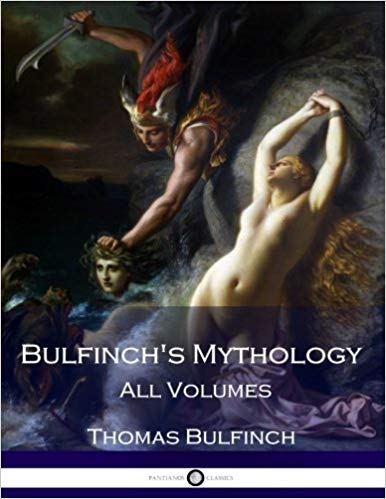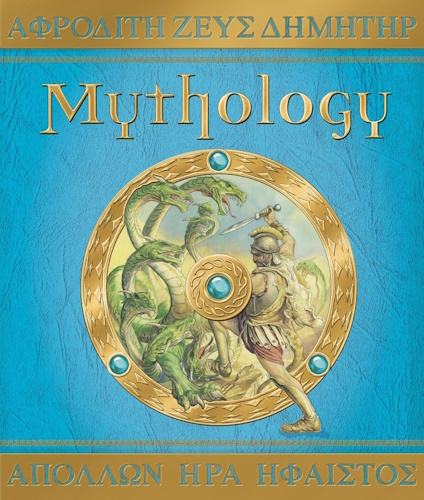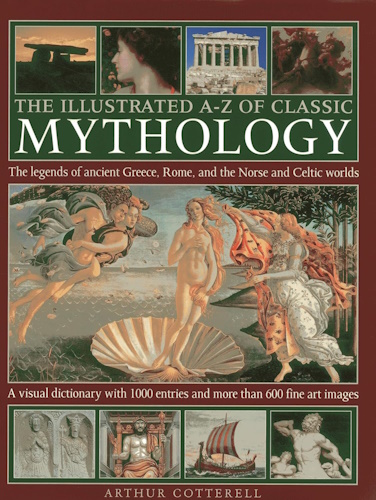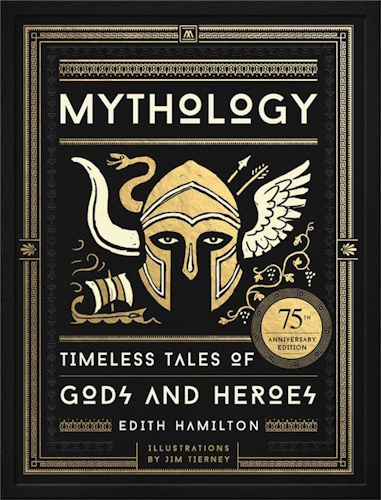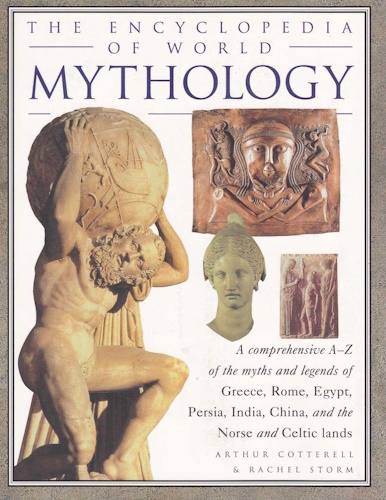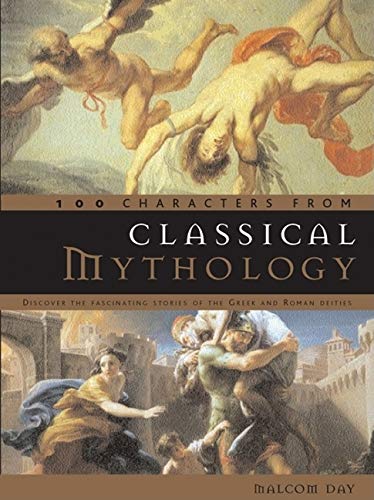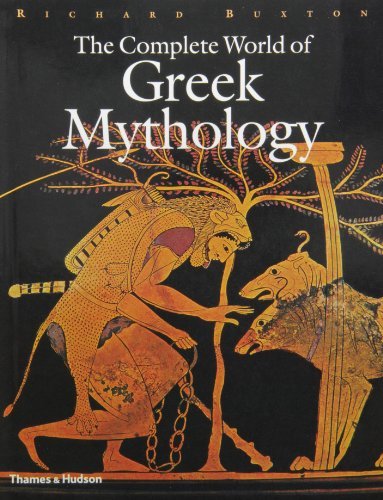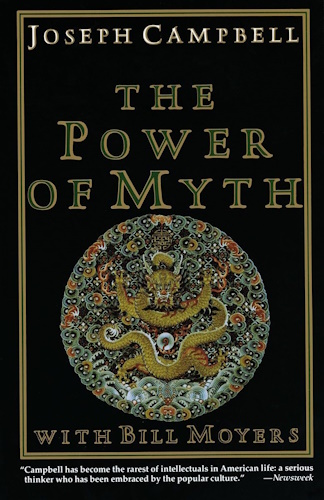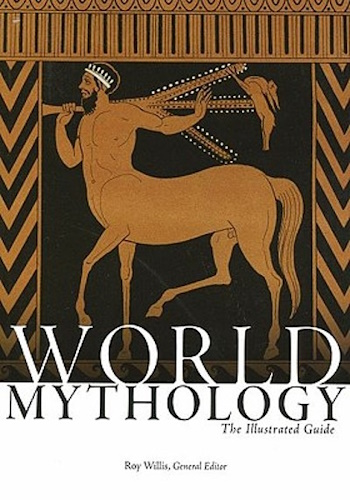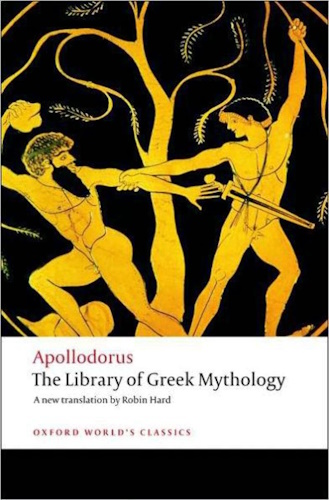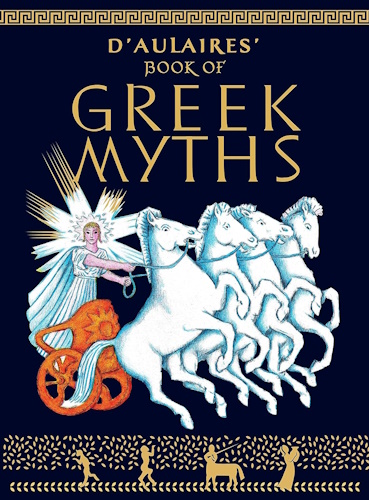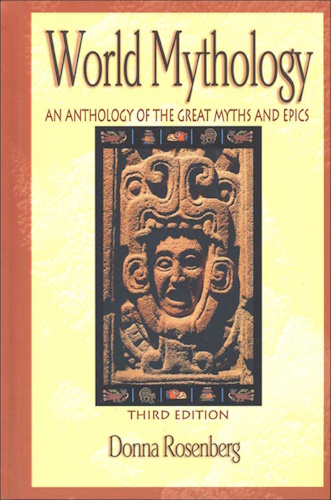
![]()
![]()
CHAPTER XXXVI.
MODERN MONSTERS- THE PHOENIX- BASILISK- UNICORN-
-SALAMANDER.
MODERN MONSTERS.
THERE is a set of imaginary beings which seem to have been the successors of the "Gorgons, Hydras, and Chimeras dire" of the old superstitions, and, having no connection with the false gods of Paganism, to have continued to enjoy an existence in the popular belief after Paganism was superseded by Christianity. They are mentioned perhaps by the classical writers, but their chief popularity and currency seem to have been in more modern times. We seek our accounts of them not so much in the poetry of the ancients as in the old natural history books and narrations of travellers. The accounts which we are about to give are taken chiefly from the Penny Cyclopedia.
THE PHOENIX.
Ovid tells the story of the Phoenix as follows: "Most beings spring from other individuals; but there is a certain kind which reproduces itself. The Assyrians call it the Phoenix. It does not live on fruit or flowers, but on frankincense and odoriferous gums. When it has lived five hundred years, it builds itself a nest in the branches of an oak, or on the top of a palm tree. In this it collects cinnamon, and spikenard, and myrrh, and of these 'materials builds a pile on which it deposits itself, and dying, breathes out its last breath amidst odours. From the body of the parent bird, a young Phoenix issues forth, destined to live as long a life as its predecessor. When this has grown up and gained sufficient strength, it lifts its nest from the tree (its own cradle and its parent's sepulchre), and carries it to the city of Heliopolis in Egypt, and deposits it in the temple of the Sun."
Such is the account given by a poet. Now let us see that of a philosophic historian. Tacitus says, "in the consulship of Paulus Fabius (A.D. 34) the miraculous bird known to the world by the name of the Phoenix, after disappearing for a series of ages, revisited Egypt. It was attended in its flight by a group of various birds, all attracted by the novelty, and gazing with wonder at so beautiful an appearance." He then gives an account of the bird, not varying materially from the preceding, but adding some details. "The first care of the young bird as soon as fledged, and able to trust to his wings, is to perform the obsequies of his father. But this duty is not undertaken rashly. He collects a quantity of myrrh, and to try his strength makes frequent excursions with a load on his back. When he has gained sufficient confidence in his own vigour, he takes up the body of his father and flies with it to the altar of the Sun, where he leaves it to be consumed in flames of fragrance." Other writers add a few particulars. The myrrh is compacted in the form of an egg, in which the dead Phoenix is enclosed. From the mouldering flesh of the dead bird a worm springs, and this worm, when grown large, is transformed into a bird. Herodotus describes the bird, though he says, "I have not seen it myself, except in a picture. Part of his plumage is gold-coloured, and part crimson; and he is for the most part very much like an eagle in outline and bulk."
The first writer who disclaimed a belief in the existence of the Phoenix was Sir Thomas Browne, in his "Vulgar Errors," published in 1646. He was replied to a few years later by Alexander Ross, who says, in answer to the objection of the Phoenix so seldom making his appearance, "His instinct teaches him to keep out of the way of the tyrant of the creation, man, for if he were to be got at, some wealthy glutton would surely devour him, though there were no more in the world."
Dryden in one of his early poems has this allusion to the Phoenix:
"So when the new-born Phoenix first is seenHer feathered subjects all adore their queen,
And while she makes her progress through the East,
From every grove her numerous train 's increased;
Each poet of the air her glory sings,
And round him the pleased audience clap their wings."
Milton, in "Paradise Lost," Book V., compares the angel Raphael descending to earth to a Phoenix:
"...Down thither, prone in flightHe speeds, and through the vast ethereal sky
Sails between worlds and worlds, with steady wing,
Now on the polar winds, then with quick fan
Winnows the buxom air; till within soar
Of towering eagles, to all the fowls he seems
A Phoenix, gazed by all; as that sole bird
When, to enshrine his relics in the sun's
Bright temple, to Egyptian Thebes he flies."
THE COCKATRICE, OR BASILISK.
This animal was called the king of the serpents. In confirmation of his royalty, he was said to be endowed with a crest, or comb upon the head, constituting a crown. He was supposed to be produced from the egg of a cock hatched under toads or serpents. There were several species of this animal. One species burned up whatever they approached; a second were a kind of wandering Medusa's heads, and their look caused an instant horror which was immediately followed by death. In Shakespeare's play of "Richard the Third," Lady Anne, in answer to Richard's compliment on her eyes, says "Would they were basilisk's, to strike thee dead!"
The basilisks were called kings of serpents because all other serpents and snakes, behaving like good subjects, and wisely not wishing to be burned up or struck dead, fled the moment they heard the distant hiss of their king, although they might be in full feed upon the most delicious prey, leaving the sole enjoyment of the banquet to the royal monster.
The Roman naturalist Pliny thus describes him. "He does not impel his body, like other serpents, by a multiplied flexion, but advances lofty and upright. He kills the shrubs, not only by contact, but by breathing on them, and splits the rocks, such power of evil is there in him." It was formerly believed that if killed by a spear from on horseback the power of the poison conducted through the weapon killed not only the rider, but the horse also. To this Lucan alludes in these lines:
"What though the Moor the basilisk hath slain,And pinned him lifeless to the sandy plain,
Up through the spear the subtle venom flies,
The hand imbibes it, and the victor dies."
Such a prodigy was not likely to be passed over in the legends of the saints. Accordingly we find it recorded that a certain holy man, going to a fountain in the desert, suddenly beheld a basilisk. He immediately raised his eyes to heaven, and with a pious appeal to the Deity laid the monster dead at his feet.
These wonderful powers of the basilisk are attested by a host of learned persons, such as Galen, Avicenna, Scaliger, and others. Occasionally one would demur to some part of the tale while he admitted the rest. Jonston, a learned physician, sagely remarks, "I would scarcely believe that it kills with its look, for who could have seen it and lived to tell the story?" The worthy sage was not aware that those who went to hunt the basilisk of this sort took with them a mirror, which reflected back the deadly glare upon its author, and by a kind of poetical justice slew the basilisk with his own weapon.
But what was to attack this terrible and unapproachable monster? There is an old saying that "everything has its enemy"- and the cockatrice quailed before the weasel. The basilisk might look daggers, the weasel cared not, but advanced boldly to the conflict. When bitten, the weasel retired for a moment to eat some rue, which was the only plant the basilisks could not wither, returned with renewed strength and soundness to the charge, and never left the enemy till he was stretched dead on the plain. The monster, too, as if conscious of the irregular way in which he came into the world, was supposed to have a great antipathy to a cock; and well he might, for as soon as he heard the cock crow he expired.
The basilisk was of some use after death. Thus we read that its carcass was suspended in the temple of Apollo, and in private houses, as a sovereign remedy against spiders, and that it was also hung up in the temple of Diana, for which reason no swallow ever dared enter the sacred place.
The reader will, we apprehend, by this time have had enough of absurdities, but still we can imagine his anxiety to know what a cockatrice was like. The following is from Aldrovandus, a celebrated naturalist of the sixteenth century, whose work on natural history, in thirteen folio volumes, contains with much that is valuable a large proportion of fables and inutilities. In particular he is so ample on the subject of the cock and the bull that from his practice, all rambling, gossiping tales of doubtful credibility are called cock and bull stories.
Shelley, in his "Ode to Naples," full of the enthusiasm excited by the intelligence of the proclamation of a Constitutional Government at Naples, in 1820, thus uses an allusion to the basilisk:
"What though Cimmerian anarchs dare blasphemeFreedom and thee? a new Actaeon's error
Shall theirs have been,- devoured by their own hounds!
Be thou like the imperial basilisk,
Killing thy foe with unapparent wounds!
Gaze on oppression, till at that dread risk,
Aghast she pass from the earth's disk.
Fear not, but gaze,- for freemen mightier grow,
And slaves more feeble, gazing on their foe."
THE UNICORN.
Pliny, the Roman naturalist, out of whose account of the unicorn most of the modern unicorns have been described and figured, records it as "a very ferocious beast, similar in the rest of its body to a horse, with the head of a deer, the feet of an elephant, the tail of a boar, a deep, bellowing voice, and a single black horn, two cubits in length, standing out in the middle of its forehead." He adds that "it cannot be taken alive"; and some such excuse may have been necessary in those days for not producing the living animal upon the arena of the amphitheatre.
The unicorn seems to have been a sad puzzle to the hunters, who hardly knew how to come at so valuable a piece of game. Some described the horn as movable at the will of the animal, a kind of small sword, in short, with which no hunter who was not exceedingly cunning in fence could have a chance. Others maintained that all the animal's strength lay in its horn, and that when hard pressed in pursuit, it would throw itself from the pinnacle of the highest rocks horn foremost, so as to pitch upon it, and then quietly march off not a whit the worse for its fall.
But it seems they found out how to circumvent the poor unicorn at last. They discovered that it was a great lover of purity and innocence, so they took the field with a young virgin, who was placed in the unsuspecting admirer's way. When the unicorn spied her, he approached with all reverence, crouched beside her, and laying his head in her lap, fell asleep. The treacherous virgin then gave a signal, and the hunters made in and captured the simple beast.
Modern zoologists, disgusted as they well may be with such fables as these, disbelieved generally the existence of the unicorn. Yet there are animals bearing on their heads a bony protuberance more or less like a horn, which may have given rise to the story. The rhinoceros horn, as it is called, is such a protuberance, though it does not exceed a few inches in height, and is far from agreeing with the descriptions of the horn of the unicorn. The nearest approach to a horn in the middle of the forehead is exhibited in the bony protuberance on the forehead of the giraffe; but this also is short and blunt, and is not the only horn of the animal, but a third horn, standing in front of the two others. In fine, though it would be presumptuous to deny the existence of a one-horned quadruped other than the rhinoceros, it may be safely stated that the insertion of a long and solid horn in the living forehead of a horse-like or deer-like animal is as near an impossibility as anything can be.
THE SALAMANDER.
The following is from the "Life of Benvenuto Cellini," an Italian artist of the sixteenth century, written by himself: "When I was about five years of age, my father, happening to be in a little room in which they had been washing, and where there was a good fire of oak burning, looked into the flames and saw a little animal resembling a lizard, which could live in the hottest part of that element. Instantly perceiving what it was, he called for my sister and me, and after he had shown us the creature, he gave me a box on the ear. I fell a-crying, while he, soothing me with caresses, spoke these words: 'My dear child, I do not give you that blow for any fault you have committed, but that you may recollect that the little creature you see in the fire is a salamander; such a one as never was beheld before to my knowledge.' So saying he embraced me, and gave me some money."
It seems unreasonable to doubt a story of which Signor Cellini was both an eye and ear witness. Add to which the authority of numerous sage philosophers, at the head of whom are Aristotle and Pliny, affirms this power of the salamander. According to them, the animal not only resists fire, but extinguishes it, and when he sees the flame charges it as an enemy which he well knows how to vanquish.
That the skin of an animal which could resist the action of fire should be considered proof against that element is not to be wondered at. We accordingly find that a cloth made of the skin of salamanders (for there really is such an animal, a kind of lizard) was incombustible, and very valuable, for wrapping up such articles as were too precious to be intrusted to any other envelopes. These fire-proof cloths were actually produced, said to be made of salamander's wool, though the knowing ones detected that the substance of which they were composed was asbestos, a mineral, which is in fine filaments capable of being woven into a flexible cloth.
The foundation of the above fables is supposed to be the fact that the salamander really does secrete from the pores of his body a milky juice, which when he is irritated is produced in considerable quantity, and would doubtless, for a few moments, defend the body from fire. Then it is a hibernating animal, and in winter retires to some hollow tree or other cavity, where it coils itself up and remains in a torpid state till the spring again calls it forth. It may therefore sometimes be carried with the fuel to the fire, and wake up only time enough to put forth all its faculties for its defence. Its viscous juice would do good service, and all who profess to have seen it, acknowledge that it got out of the fire as fast as its legs could carry it; indeed, too fast for them ever to make prize of one, except in one instance, and in that one the animal's feet and some parts of its body were badly burned.
Dr. Young, in the "Night Thoughts," with more quaintness than good taste, compares the sceptic who can remain unmoved in the contemplation of the starry heavens to a salamander unwarmed in the fire:
"An undevout astronomer is mad!. . . . . . .
"O, what a genius must inform the skies!
And is Lorenzo's salamander-heart
Cold and untouched amid these sacred fires?"
-
Urantia Book, 44:0.11 - The Celestial Artisans
Never in your long ascendancy will you lose the power to recognize your associates of former existences. Always, as you ascend inward in the scale of life, will you retain the ability to recognize and fraternize with the fellow beings of your previous and lower levels of experience. Each new translation or resurrection will add one more group of spirit beings to your vision range without in the least depriving you of the ability to recognize your friends and fellows of former estates.
-
Princess Bride 1987 Wallace Shawn (Vizzini) and Mandy Patinkin (Inigo Montoya)
Vizzini: HE DIDN'T FALL? INCONCEIVABLE.
Inigo Montoya: You keep using that word. I do not think it means what you think it means. -
Urantia Book, 117:4.14 - The Finite God
And here is mystery: The more closely man approaches God through love, the greater the reality -- actuality -- of that man. The more man withdraws from God, the more nearly he approaches nonreality -- cessation of existence. When man consecrates his will to the doing of the Father's will, when man gives God all that he has, then does God make that man more than he is.
-
Urantia Book, 167:7.4 - The Talk About Angels
"And do you not remember that I said to you once before that, if you had your spiritual eyes anointed, you would then see the heavens opened and behold the angels of God ascending and descending? It is by the ministry of the angels that one world may be kept in touch with other worlds, for have I not repeatedly told you that I have other sheep not of this fold?"
-
Urantia Book, Foreword - 0:12.12 - The Trinities
But we know that there dwells within the human mind a fragment of God, and that there sojourns with the human soul the Spirit of Truth; and we further know that these spirit forces conspire to enable material man to grasp the reality of spiritual values and to comprehend the philosophy of universe meanings. But even more certainly we know that these spirits of the Divine Presence are able to assist man in the spiritual appropriation of all truth contributory to the enhancement of the ever-progressing reality of personal religious experience—God-consciousness.
-
Urantia Book, 1:4.3 - The Mystery Of God
When you are through down here, when your course has been run in temporary form on earth, when your trial trip in the flesh is finished, when the dust that composes the mortal tabernacle "returns to the earth whence it came"; then, it is revealed, the indwelling "Spirit shall return to God who gave it." There sojourns within each moral being of this planet a fragment of God, a part and parcel of divinity. It is not yet yours by right of possession, but it is designedly intended to be one with you if you survive the mortal existence.
-
Urantia Book, 1:4.1 - The Mystery Of God
And the greatest of all the unfathomable mysteries of God is the phenomenon of the divine indwelling of mortal minds. The manner in which the Universal Father sojourns with the creatures of time is the most profound of all universe mysteries; the divine presence in the mind of man is the mystery of mysteries.
-
Urantia Book, 1:4.6 - The Mystery Of God
To every spirit being and to every mortal creature in every sphere and on every world of the universe of universes, the Universal Father reveals all of his gracious and divine self that can be discerned or comprehended by such spirit beings and by such mortal creatures. God is no respecter of persons, either spiritual or material. The divine presence which any child of the universe enjoys at any given moment is limited only by the capacity of such a creature to receive and to discern the spirit actualities of the supermaterial world.
-
Urantia Book, 11:0.1 - The Eternal Isle Of Paradise
Paradise is the eternal center of the universe of universes and the abiding place of the Universal Father, the Eternal Son, the Infinite Spirit, and their divine co-ordinates and associates. This central Isle is the most gigantic organized body of cosmic reality in all the master universe. Paradise is a material sphere as well as a spiritual abode. All of the intelligent creation of the Universal Father is domiciled on material abodes; hence must the absolute controlling center also be material, literal. And again it should be reiterated that spirit things and spiritual beings are real.
-
Urantia Book, 50:6.4 - Planetary Culture
Culture presupposes quality of mind; culture cannot be enhanced unless mind is elevated. Superior intellect will seek a noble culture and find some way to attain such a goal. Inferior minds will spurn the highest culture even when presented to them ready-made.
-
Urantia Book, 54:1.6 - True And False Liberty
True liberty is the associate of genuine self-respect; false liberty is the consort of self-admiration. True liberty is the fruit of self-control; false liberty, the assumption of self-assertion. Self-control leads to altruistic service; self-admiration tends towards the exploitation of others for the selfish aggrandizement of such a mistaken individual as is willing to sacrifice righteous attainment for the sake of possessing unjust power over his fellow beings.
-
Urantia Book, 54:1.9 - True And False Liberty
How dare the self-willed creature encroach upon the rights of his fellows in the name of personal liberty when the Supreme Rulers of the universe stand back in merciful respect for these prerogatives of will and potentials of personality! No being, in the exercise of his supposed personal liberty, has a right to deprive any other being of those privileges of existence conferred by the Creators and duly respected by all their loyal associates, subordinates, and subjects.
-
Urantia Book, 54:1.8 - True And False Liberty
There is no error greater than that species of self-deception which leads intelligent beings to crave the exercise of power over other beings for the purpose of depriving these persons of their natural liberties. The golden rule of human fairness cries out against all such fraud, unfairness, selfishness, and unrighteousness.
